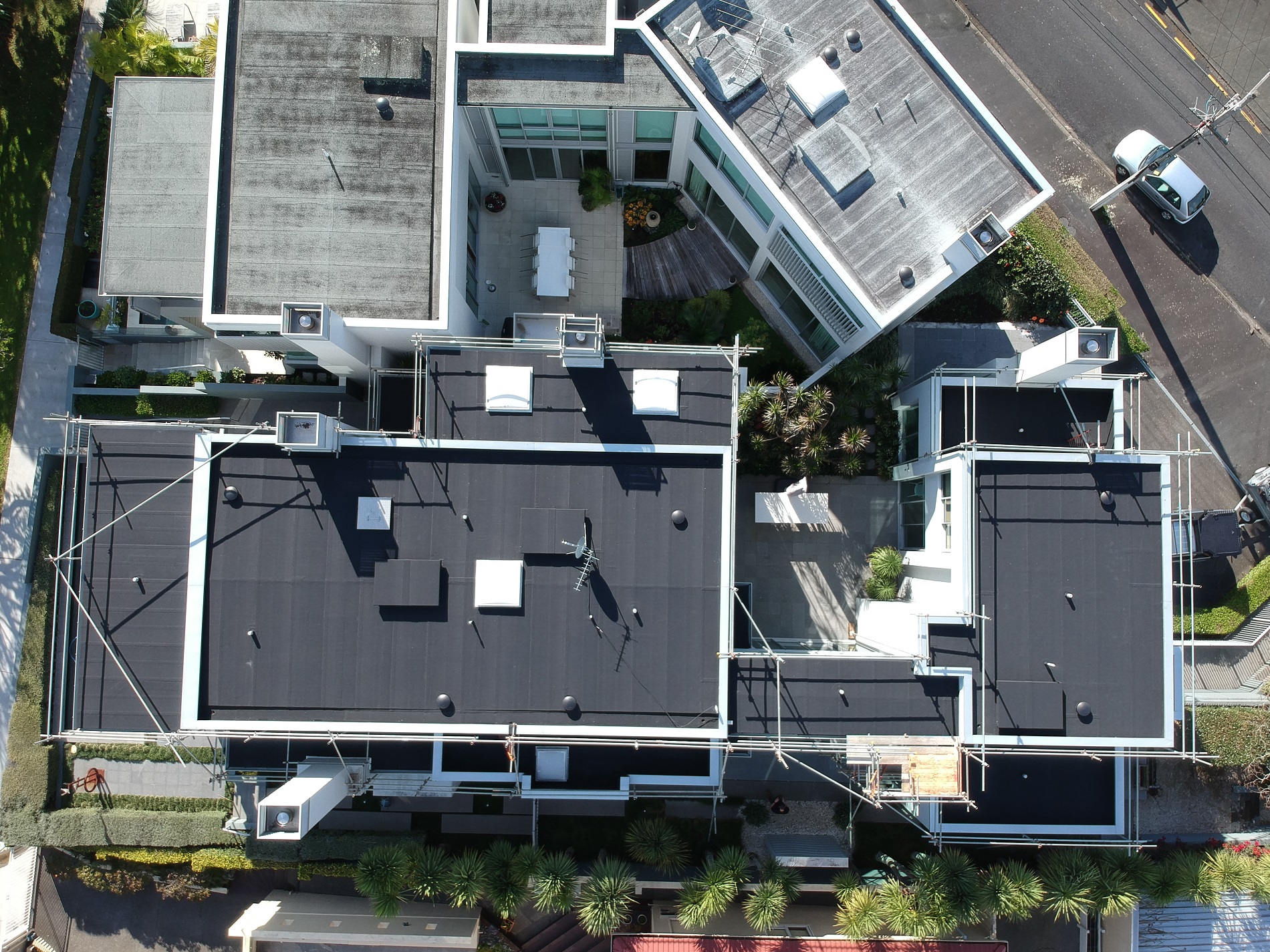At Complete Waterproofing, we can complete your roof membrane installation or re-roofing project, plus we install waterproofing deck membranes. Here’s why you should choose us for your project:
Flat roof and deck surfaces are exposed to weather extremes and need to be effectively waterproofed.
We are experienced installers of waterproof membrane systems for flat roof, deck and balcony areas in Auckland residential, industrial, and commercial buildings. These include apartment complexes, retirement villages, nursing homes, and schools.
We work promptly and efficiently alongside building or construction teams, or we can manage your whole roofing project ourselves.
We are approved applicators of all roof and deck systems and products we install. Most have 20-year warranties, and you’ll also be covered by our Complete Waterproofing 10-year warranty of workmanship.
We are also Auckland’s leading repairer of leaking roof membranes.
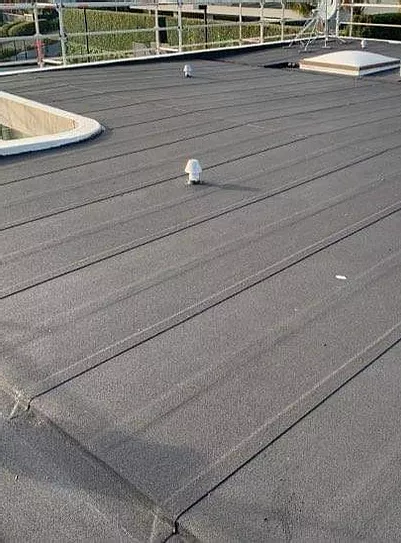
Nuralite’s bituminous torch-on membrane systems are the most specified in New Zealand. Their double-layer 3PM system is called “bulletproof” and provides a completely watertight, long-lasting, attractive, and low-maintenance layer for your flat roof or deck project where there is light foot traffic.
Viking Roofspec supplies us with a range of two-layer, torch-on roof membrane systems offering superior quality waterproofing, UV resistance, and flexibility. These are designed for use as an exposed architectural membrane on flat roofs, podium decks, terraces, and balconies. Vikings APAO Super Phoenix double layer torch on membrane system also comes with a 25 year product warranty.
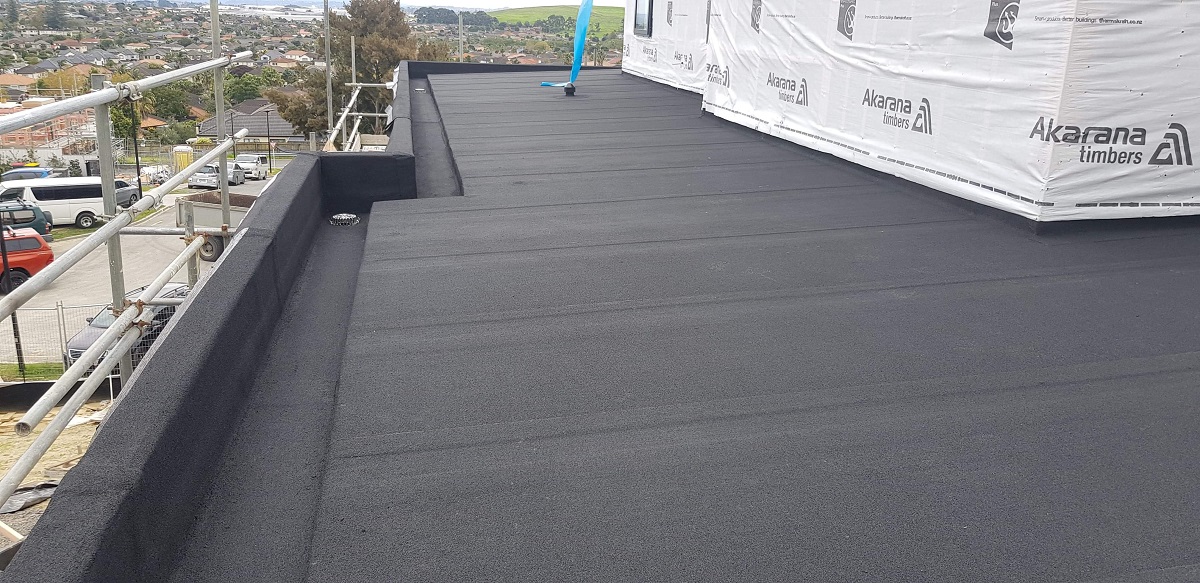
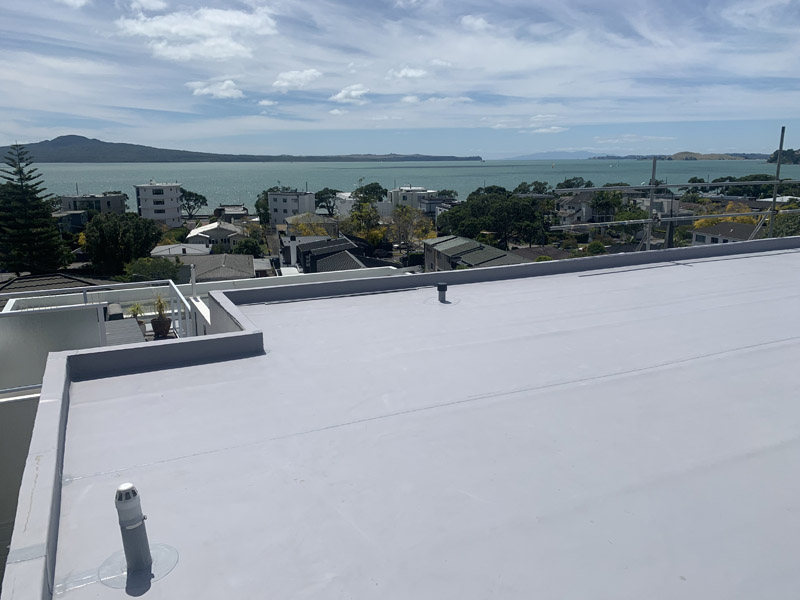
A TPO membrane is a single-ply membrane with seams connected by heat-welding to give a clean, smooth finish. TPO combines the performance of thermo-plastics with elastomerics such as EPDM. It contains no toxic substances, so it’s an environmentally friendly option, and potable water can be collected off a TPO roof. The flexibility of a TPO membrane ensures water tightness for areas of a roof vulnerable to leaks, such as aircon units, awkward corners, and pipe penetrations.
Developed for boat decking in the 1980s, Dec-K-ing from Viking is a tough, attractive, reinforced PVC membrane ideal for application to decks and balconies above living areas. The textured surface provides underfoot grip for high-traffic zones such as walkways. The product’s flexibility and heat-weldable seam technology provide the ultimate waterproofing solution.
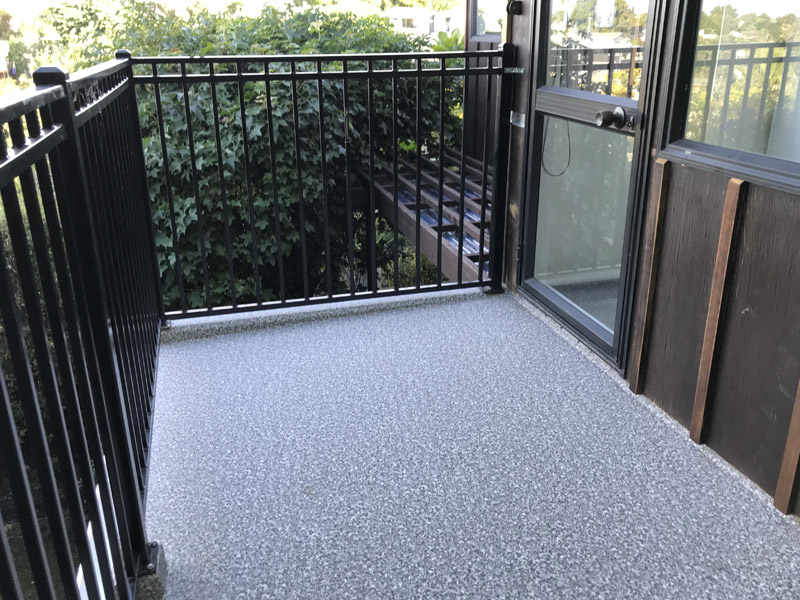
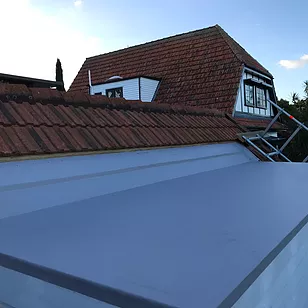
Liquid membrane systems can be applied as a waterproofing layer to almost any existing roof or deck surface, including concrete and plywood, They are easy to apply, and tolerate water pooling. A liquid membrane can be used to extend the life of your flat roof.
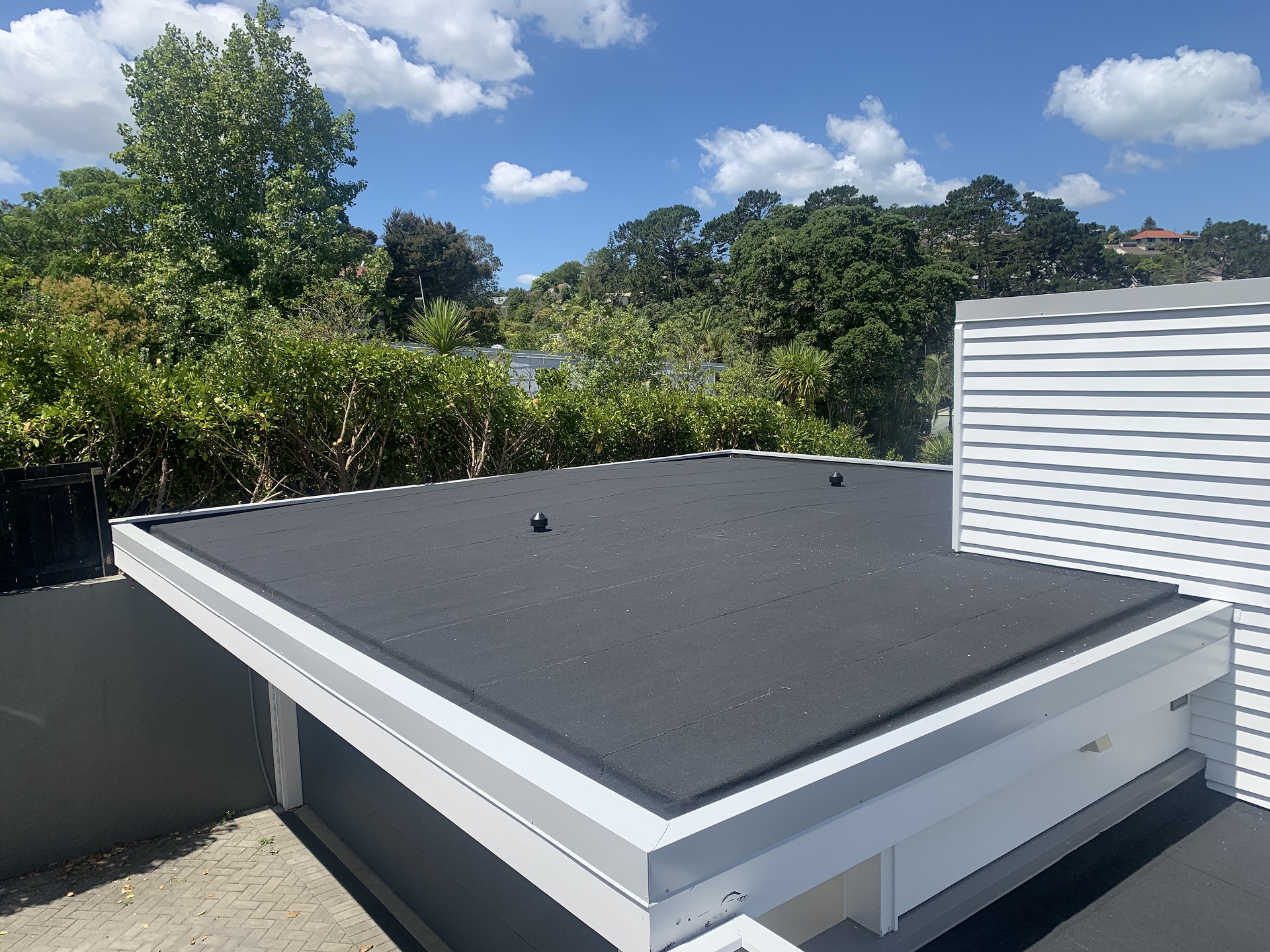
Made in New Zealand by Ardex since 1967, Butynol – a synthetic rubber product – is widespread as a membrane for flat roofs in residential and commercial buildings. There are good reasons for its popularity: manufactured locally for our weather conditions, Ardex Butynol is tough and durable. It resists ageing from the elements, and is impermeable to water, gases, frost, corrosive chemicals, and germs, yet remains flexible in all temperatures.
Viking Butylclad, with a reputation for effectiveness established over 50 years, combines the toughness of butyl rubber with the elongation and UV protection properties of EPDM. It provides ideal waterproofing for areas such as low-pitch roofs and gutters.
A full inspection by an approved applicator (e.g. every 5 years) is a warranty requirement for your membrane roof in Auckland.
Otherwise, we recommend that you inspect your roof periodically (e.g. annually), focusing on vulnerable areas such as hatches, drains and roof-top equipment, parapets and edges. Check the underside of the roof for any signs of leakage, deterioration, or cracking.
Sweep the roof clean and wash it down with a hose and brush. Don’t use a water blaster.
The location and amount of traffic across the surface of the membrane will largely dictate the maintenance required.
If your membrane system includes a surface colour coat, this will need to be recoated, probably every 5 to 10 years.
